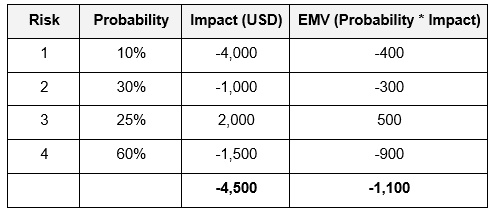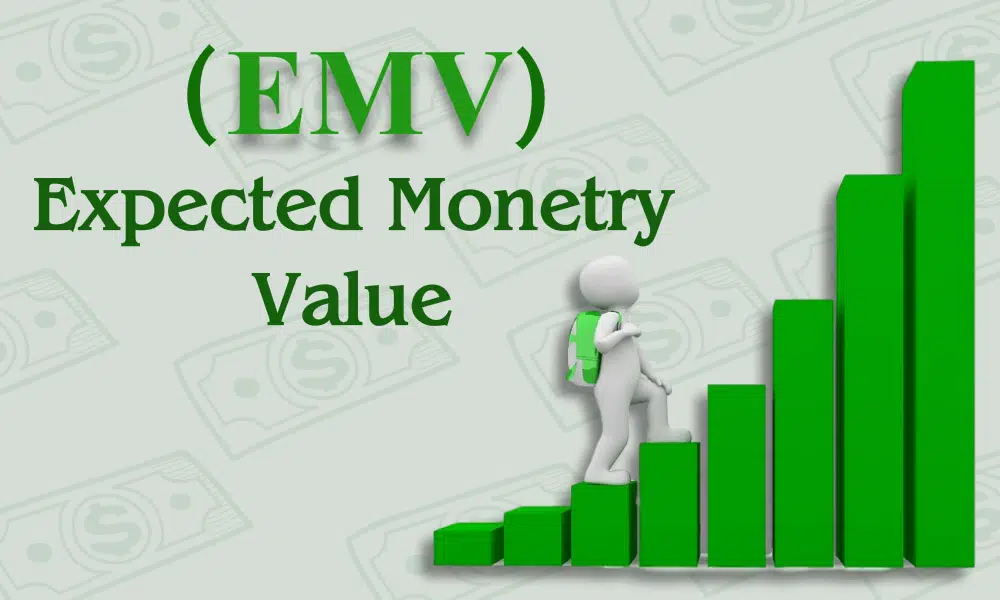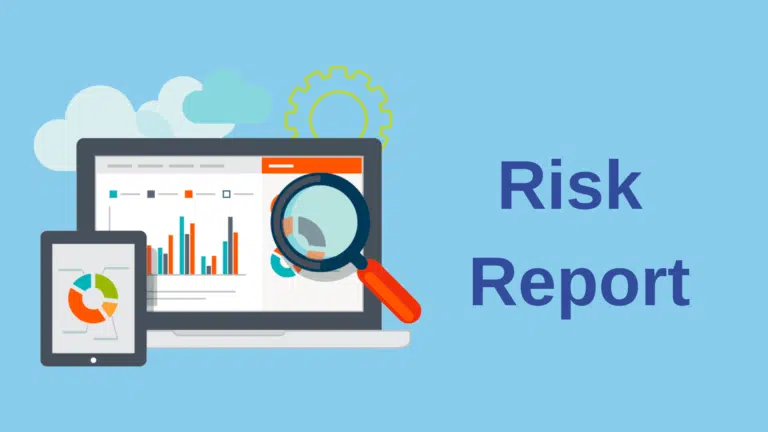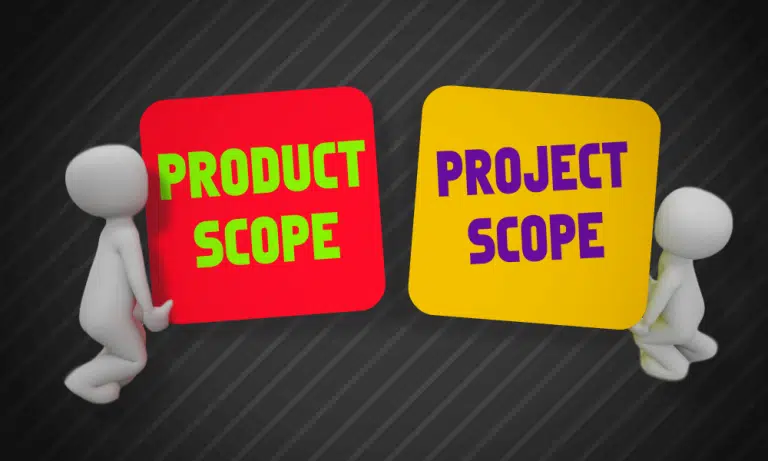Expected Monetary Value (EMV) is an integral part of risk management and is used in the perform quantitative risks analysis process.
This technique involves mathematical calculations, which is why many PMP aspirants ignore it. I do not recommend avoiding it. This concept requires only one EMV formula.
Read this blog post and follow the examples to enhance your understanding.
EMV is a straightforward concept and involves basic calculations. Once you understand, solving questions will be easy.
The EMV calculation involves probability and impact so let’s discuss those first.
Probability
Probability is the likelihood that any event will occur.
For example, if you toss a coin, there is a 50% chance of showing heads and a 50% chance of showing tails. So, you say the probability of showing heads or tails is 50%.
Now we will discuss it mathematically.
The formula to calculate the probability is:
The probability of an event happening = (Number of favorable events that can occur) / (Total number of events)
Let’s see how the above formula fits with our coin example.
Total number of events = 2 (because the coin can either show heads or tails)
Total number of favorable events = 1 (assuming it’s favorable to show heads)
The probability of showing heads = (Number of favorable events) / (Total number of events)
= 1/2
= 50%
So the probability of showing heads is 50% if you toss the coin.
Let’s look at another example.
Suppose you are throwing a die; what is the probability of rolling a 5?
If you throw the dice, it will show you: 1, 2, 3, 4, 5, or 6.
Therefore, the total number of events = 6
Now, you want the die to show the number 5.
Total number of favorable events = 1
Therefore, the probability of the number 5 showing = (Number of favorable events) / (Total number of events)
= 1 / 6
= 16.67%
So, if you throw the dice, the probability of rolling a 5 is 16.67%.
Now let us find the probability of getting either a 5 or a 3.
Here, the total number of favorable events = 2
Therefore, the probability of getting either 5 or 3 = (Number of favorable events) / (Total number of events)
= 2/6
=1/3
= 33.33%
So, if you throw the dice, the probability of getting either a 5 or a 3 is 33.33%.
This was a short introduction to probability.
Impact
The impact is the amount you will spend if a given identified risk occurs.
For example, you have identified that equipment may break during your project, and new equipment will cost you 2,000 USD.
So, the impact of the risk will be 2,000 USD.
This is a description of the impact.
I hope that probability and impact are now clearer to you.
Expected Monetary Value (EMV)
EMV is a statistical technique in risk management used to quantify risks and calculate the contingency reserve.
It calculates the average outcome of all future events that may or may not happen.
Expected Monetary Value (EMV) Formula
You multiply the probability by the impact of the identified risk to get the EMV.
Expected Monetary Value (EMV) = Probability * Impact
You will add the EMVs of all risks if you have multiple risks. This will be the expected monetary value of the project.
You will calculate the EMV of all risks, regardless of whether they are positive or negative. The EMV will be negative for negative risks and positive for positive risks.
Once you calculate the expected monetary value of the project, you will add it to your work costs estimate and generate the cost baseline. This amount is called the contingency reserve.
The sum of the EMV of all events is the contingency reserve.
For example, let’s say you have four risks with probabilities and impacts as follows:

You might think you need 4,500 USD to manage all risks above, but that is incorrect. Among all the identified risks, only a few will occur. The risks that do not occur will add their EMV to the pool, and the risks that do occur will use that money.
So, you will need 1,100 USD to cover all identified risks in this case.
The expected monetary value concept works well to calculate the contingency reserve when you have many risks because the more you identify, the better your contingency will cover them.
If you have identified fewer risks, your reserve may dry up too soon or may not be large enough to cover a high impact.
Positive risks play a crucial role in calculating the contingency reserve. You should identify and include them in expected value calculations.
Expected Monetary Value Examples
Now let’s have a look at a few EMV examples.
Example-I
You have identified a risk with a 30% chance of occurring. It may cost you 500 USD. Calculate the expected monetary value for this risk event.
Given in the question:
The probability of risk = 30%
Impact of risk = – 500 USD
We know that:
Expected monetary value (EMV) = probability * impact
= 0.3 * – 500
= – 150
The expected monetary value (EMV) of the risk event is –150 USD.
Example-II
You have identified an opportunity with a 40% chance of happening. However, it may help you gain 2,000 USD. Calculate the expected monetary value (EMV) for this risk event.
Given in the question:
Probability of risk = 40%
Impact of risk = 2,000 USD
We know that:
Expected monetary value (EMV) = probability * impact
= 0.4 * 2,000
= 800
Hence, the expected monetary value of the risk event is 800 USD.
Example-III
You have identified two risks with a 20% and a 15% chance of occurring. They will cost you 1,000 USD and 2,000 USD if both happen.
What is the expected monetary value of these risk events?
In the above question, you have two negative risks; therefore, the expected monetary value of these two risks will be the sum of their individual EMVs.
The expected monetary value of two risk events = EMV of the first event + EMV of the second event
EMV of the first event = 0.20 * (–1,000)
= –200
EMV of the second event = 0.15 * (–2,000)
= –300
Therefore, the EMV of these two risks events = (–200) + (–300)
= –500
The expected monetary value of these two events is –500 USD.
Example-IV
During risk management planning, your team has identified three risks with probabilities of 10%, 50%, and 35%. If the first two risks occur, they will cost you 5,000 USD and 8,000 USD; however, the third risk will give you 10,000 USD if it occurs.
Determine the expected monetary value of these risk events.
The expected monetary value of three events = EMV of the first event + EMV of the second event + EMV of the third event
EMV of the first event = 0.10 * (–5,000)
= –500
EMV of the second event = 0.50 * (–8,000)
= –4,000
EMV of the third event = 0.35 * 10,000
= 3,500
EMV of all three events = EMV of the first event + EMV of the second event + EMV of the third event
= – 500 – 4,000 + 3,500
= –1,000
The expected monetary value (EMV) of all three events is –1,000 USD.
These are simple examples of expected monetary value analysis. In the PMP exam, you may see similar questions.
Expected monetary value also helps you with selecting the right choice.
For example, you have a risk and identified two risk response strategies to manage this risk. How will you select the best strategy?
You will use the expected monetary value to select the right risk response strategy to manage the risk.
How?
Calculate the expected monetary value for each response and select the one that is the lowest.
Benefits of EMV Analysis
- It gives you an average outcome of all identified uncertain events.
- It helps you to calculate the contingency reserve.
- In a decision tree analysis, it helps select the best choice.
- It does not require any costly resources, only experts’ opinions.
- It helps you with a make-or-buy decision during the plan procurement process.
Drawbacks of EMV Analysis
- This technique is uncommon in small and small-medium-sized projects.
- This technique involves expert opinions to finalize the probability and impact of the risk; personal bias may affect the result.
- This technique works better when you have many risks.
- If you miss a positive risk, it will affect the outcome.
Summary
Expected monetary value analysis makes it easier to quantify risks, calculate the contingency reserve and help you select the best choice in a decision tree analysis. Your risk attitude should be neutral during this process; otherwise, your calculation may suffer. Moreover, the reliability of this analysis depends on the input data. A data quality assessment should be thoroughly performed. This technique increases the confidence level in achieving the project objectives.
Do you use expected monetary value analysis in your projects? If yes, please share your experiences in the comments section.
This concept is important from a PMP and PMI-RMP exam point of view. You will see a few questions on the expected monetary value analysis.

I am Mohammad Fahad Usmani, B.E. PMP, PMI-RMP. I have been blogging on project management topics since 2011. To date, thousands of professionals have passed the PMP exam using my resources.








Need solution.
Please help
The Board of Quest plc is due to meet to consider investing in a new project which will allow the company to diversify its existing product range. Before the meeting the Finance Director, has asked you, to evaluate the project using the following information.
Market research has been undertaken at a cost of HK$500,000 which shows that the project will result in the following cash flows:
Year 1
Year 2
Year 3
Year 4
Sales volume (units)
100,000
130,000
130,000
90,000
Selling price (HK$/unit)
472
523
551
660
Variable cost (HK$/unit)
275
315
351
403
Fixed costs (HK$)
8,760,000
9,030,000
9,320,000
9,610,000
These forecasts are after taking account of selling price inflation of 3·0% per year, variable cost inflation of 6·0% per year and fixed cost inflation of 3·5% per year.
In addition included in the fixed costs is a figure of HK$1,000,000 which represents an apportionment of general overheads. The balance of the fixed costs are incremental fixed costs which are associated with the new project.
The total machinery costs of the project in year 0 are estimated to be HK$40,000,000 and the machinery from the project will be sold for scrap with a value of HK$4,000,000 at the end of year 4.The company will also have to spend HK$ 3,000,000 refurbishing the building before the new machinery can be installed.
Quest plc pays corporation tax of 25% per year. This is paid in the following year (i.e. one year in arrears) Capital allowances on an 18% reducing balance basis are available on the machinery only. A balancing charge or allowance is available at the end of the fourth year of operation.
Quest plc has a real cost of capital of 9% and the general rate of inflation is 3.7%
Required:
Recommend to the Board whether the project should be undertaken by:
Calculating the nominal after-tax Net Present Value of the new project using the money cost of capital.(Round to the nearest whole number)
Calculating the Internal Rate of Return of the new project.
After the Board meeting, you were asked to consider the risk of the project and you have reported back to the board that the Expected Net Present Value and the Standard Deviation of the project are HK$1,290,000 and HK$1,640,000 respectively.
Required:
Calculate the percentage probability that the project will be value destroying (you can assume a normal distribution of outcomes.) and briefly discuss the difficulties of using probability analysis in incorporating risk into investment appraisal.
One of the directors thinks that incorporating inflation into the calculation in the way outlined above is too time consuming and just adds more costs to the business without giving a significant benefit.
Required:
Explain one other way that inflation can be incorporated in the NPV calculation and discuss which method you think the company should adopt.(use the figures above to support your answer)
One of the simplest and nicest explanations I have seen even for a complex topic. Glad I went through the details of EMV. Thank you Eng. Fahad for sharing your knowledge. Jazak Allahu Khair
Machaallah. The topics are well explained.
According to PMBOK – Decision Tree Analysis :
“Highest (Large) EMV value will be selected”.
While you are mentioned:
“ You will calculate the expected monetary value for each response and select the one that has the lowest value”.
Please clarify ?
I find this Q & answer
Calculate expected monetary value of the following: 0.4 probability of $3,000, 0.3 probability of -$500,
0.2 probability of $750,0.1 probability of $5,000.
A. $2,062.50
B. $8,250
C. $1,700
D. $2,000
B: To calculate the expected monetary value (EMV), multiply each probability by its dollar amount and
add the products of the multiplications. The result is a value of$8,250.
I think it is incorrect answer
are u with me
I’ve found C as the right answer. Do you too?
C
Of course C
The correct answer is C $1700
1) 3,000*40% = 1200
2) -500*30% = -150
3) 750*20% = 150
4) 5000*10% = 500
Total = $1700
very well explained
Thank you DD for your visit and leaving comment.
Thanks for this,very helpful
You are welcome Tunrayo.
Wow! That was clear. I understood. Thank you.
You are welcome MW.
What does EMV10 mean then?
do we use this during weeding planning?
Yes, you can use it.
can you please help me to solve it?
categories Outcomes of rolling a die
1 2 3 4 5 6
A 100 200 300 400 500 600
B 600 500 200 200 300 400
C 300 500 200 100 100 200
What should we chose using EVM?
What is the most you would pay for perfect information on the die roll?
Waw! It is a very informative writing and presentation is well organized which giving a clear concepts to everyone even to beginer.
Thanks Khairul for your visit and leaving comment.
Hi,
Thank you. This has been extremely helpful.
Charlain
You are welcome Charlain.
Can we expect questions to choose a project based on EMV value? if so should we choose lowest impact? what if you have EMV with a positive value? should we go for that
EMV has no relation with project selection. It helps you calculating the project budget (more specifically: contingency reserve).
Can any one help me understand this?
A local authority in the USA owns a tramway system; and the tram operators are under pressure to increase passenger numbers. They have to make a decision on whether to lower fares in an attempt to increase passenger numbers.
If they decide to reduce fares they will then have to decide whether to launch a TV advertising campaign to increase awareness of the fare reduction.
If fares remain the same then it is estimated that there is a 0.7 probability that the mean number of passengers carried per day over the next year will equal to 20 000 and a 0.3 probability that it will decline to 15 000.
The annual profits associated with these passenger numbers are estimated to be $3million and $1million, respectively.
If the fares are reduced, but TV advertising is not used, then it is thought that there is a 0.6 probability that the mean number of passengers carried will increase to 25 000 and a 0.4 probability that it will increase 22 000. The resulting profits generated by these passenger numbers are estimated to be $2million and $1.7 million, respectively.
TV advertising of the fare reduction would increase the probability of an increase to a mean of 25 000 passengers to 0.8; and reduce the probability that the mean will be 22 000 to 0.2. However, it would reduce the profits associated with these mean passenger numbers by $0.6 million. The tram operating company’s objectives are to [A] maximise profit and to [B] maximise passenger numbers. Note This second objective is in place as the local authority wish to bring forward social & environmental benefits {e.g. improved air quality, more people walking and reduced traffic congestion}.
(a) Utility functions for the mean numbers of passengers carried and the profit have been obtained from the trams operator’s Chief Executive Officer (CEO). and these are given below:
Mean number of passengers Utility
15 000 0.00
18 000 0.60
20 000 0.80
22 000 0.95
25 000 1.00
Profit ($ million) Utility
1.0 0.00
1.1 0.20
1.4 0.60
1.7 0.75
2.0 0.90
2.5 0.95
3.0 1.00
Discuss briefly how utility functions can be determined in practice. Plot the above utility functions and provide an interpretation.
(b) The elicitation session revealed that, for the CEO, mean number of passengers and profit are mutually utility independent. You are reminded that, in this case, a two-attribute utility function can be obtained from:
u(x1, x2) = k1u(x1) + k2u(x2) + k3u(x1)u(x2)
Where k3 = 1 – k1 – k2
The elicitation session also revealed that k1 =0.9 and k2 = 0.6, where the attribute number 1 is the mean number of passengers. Determine the policy that the tramway should undertake in the light of the above utilities; and comment on your answer.
(c) Discuss briefly other multi-criteria decision making models or methods that could be used to assist managerial decision making in the context of the above example.
Jazak Allah Kum Khair Brother Fahad for this wounderful and detail blog for EMV.Expected more such important topics.
Thanks Parvez.
Very simple and informative article for which you deserve to be praised. But let me ask one question, what does it mean if a project EMV is say -1000 USD or 1000 USD? Does it mean, it is -1000 USD loss of money or 1000 USD profit. Kindly translate it in simple way.
It is neither loss or profit. If it is negative, you will ad it to the project cost and if it is positive, you will subtract it from the project cost.
What does EMV at 5% means??
Can you explain it little further?
This has been VERY helpful in understanding and applying the concept to my current projects. Thank you, Fahad!
You are welcome Vincent.
Dear Fahad, thanks for the article. The only thing I’m not sure is positive and negative EMV. As far as I understand, negative EMV (-1,500) means you have to add funds to your contingency reserve. Positive EMV (1,500) means gain? Or which one is better? Please clarify. Thanks so much in advance!
Yes, you are right. Risks are risks and you have to identify them as early as you can.
Can you please explain further the benefits. For further understanding. Thank you
It is explained here. If you want to discuss any specific benefit, let me know.
May I ask which is better having a high expected monetary value or having a low expected monetary value? And why?
Expected monetary value shows how much contingency reserve you need to cover the identified risks. If the contingency reserve is high, the project is more risky.
AA Bro, JKH.
My biggest challenge to EMV calculation is not the calculation itself, but rather the setup of the stems of the question for calculation. Is there a sure path to always follow in solving EMV? Or, some sort of STEPS that one must follow in order to pull the needed information together for the simple calculation?
Take for example the following question, which was very confusing to me, but yet simple in calculations.
ABC Corp. is considering three alternative machines to produce a new product. The cost structures (unit variable costs plus fixed costs) for the three machines are shown as follows. The selling price is unaffected by the machine used.
Single purpose machine $.60x + $20k
Semiautomatic machine $$.40x + $50,000
Automatic machine $.20x + $120,000
The demand for units of the new product is described by the following probability distribution.
Demand Probability
200,000 0.4
300,000 0.3
400,000 0.2
500,000 0.1
Using the expected value criterion,
a:The single purpose machine should be used because of the low expected demand.
b:The semiautomatic machine should be used because it has the lowest expected cost
c:The automatic machine should be used because of the high expected demand.
d:The automatic machine has the lowest expected cost.
CORRECT ANSWER IS B. But can you help me setup the calculations?
JKH
Perfect explanation! Thanks
You are welcome Giorgi.
please help me,
JD Corporation Sdn.Bhd (JDC) is trying to decide whether to make or buy apart for AIRBUS. Purchasing the part would cost $1.50 each. If they design and produce it themselves, it will result in a per unit cost of $0.75. However, the design investment would be $50,000. Further, they realize that for this type of part, there is a 30% chance that the part will need to be redesigned at an additional cost of $50,000. Regardless of whether they make or buy the part, JDC will need 100,000 of these parts. Using decision trees analysis and EMV, what should JDC do?
It should be like this
Purchase option
Total cost = 100.000*1.50 = 150.000
EMV = 0
Make option
Total cost = 100.000*0.75+50.000+50.000*0.35 = 142.500
EMV = -17.500
Is best to Make the part
There is a 50% chance that the project will miss the schedule. Project worth is 1,000,000 $ and has a penalty of 200,000 $ for late delivery. What is the EMV?
EMV for this event = 0.5 X (-200,000)
= -100,000 USD.
It is very valuable resource for me while I am one of project Management to get such questions and answers for simplifications
Thanks Xasan.
Can you please help me… I don’t know how to solve this :
The product design group of ABC Electric Supplies has determined that it needs to design a new series of switches. It must decide on one of three design strategies. The market forecast is for 200,000 units. The better and more sophisticated the design, DR Berry, has decided that the following costs are a good estimate of the initial and variable costs connected with each of the 3 strategies :
a) Low-tech : a new technology, low-costs process consisting of hiring several new junior engineers. This option has a cost of $45,000 and variable cost probabilities os 0.3 for $0.55 each, 0.5 for $0.5 and 0.3 for $0.45.
b) Subcontract : a medium-cost approach using good outside design staff. This approach would have an initial costs of $65,000 and variable cost probabilities of 0.7 of $0.45, 0.2 of $0.40 and 0.1 of $0.35.
c) High-tech : a high technology approach using the very best if the inside staff and latest computer-aided design technology. This approach has a fixed cost of $75,000 and variable costs probabilities of 0.9 of $0.40 and 0.1 of $35
What is the best decision based on an expected monetary value criterion?
Hi Fahad,
I’m just confused on one thing.
If the EMV is -$500, meaning it is a threat, that would then reflect in the contingency reserve as money we would have to add to the reserve, correct?
Threats are reflected as negative values in EMV but are reflected as positive amounts in the contingency reserve. And vice versa– opportunities are reflected as positive values in EMV but are amounts we would subtract in the contingency reserve?
Thanks in advance,
Rachel
Correct.
if probability not given then how we can find the EMV?
You can not.
Just learning about EMV and thought I understood that the probability total for all risks should equal 100. Your table does not reflect this. Can you explain why and any rules for how to establish the probabilities for multiple risks?
Thank you
The table is just for illustration purpose only. In reality the table will have hundreds of risks so the spread would be better.
First of all, thank you very much for the detailed post and examples.
From the Table where you calculate the EMV you get a contingency reserve of $1,100. However, the fourth risk has a probability of 60% and an impact of $1,500. If that risk occurs, one wouldn’t even be able to cover it. What good is the EMV then ?
Regards,
Why we take least EMV, if we have 3 or 4 from the Decision Tree Method.
Please Explain with examples.
Thanks
You can manage a risk with either spending 100 USD or 200 USD. What option will you select? You will select the option with least value.
I want some examples on decision tree analysis by using emv criteria as I am an MBA student so please help me and send some problems with answers
I haven’t written any blog post on decision tree yet. If you are member of PMI, you can get some examples on eRead and Reference.
Hi Fahad,
Thanks for supporting PMP aspirants.
I have found your notes and blog very useful. My humble request to you! Kindly start upgrading your materials to reflect changes in the PMBOK 6th edition. Most people have started preparing for exams following the 6th edition including myself. Blessings to you.
Sure I will do that.
Bro,
Can you please help me understand when we actually add the cost in impact value while calculating the path value. I have seen an example, actually that is from Edwel where she is adding the cost in impacted value before he calculates the path value.
Build a house – Cost = 200K – Meet the needs = 85% Does not meet the needs – Impact = 30K
Buy a house – Cost = 85K – Meet the needs = 40% Does not meet the needs – Impact = 300K
Path 1 Build House
So while calculating the path value what he has done is that he has added (200+30)*15%
Second path value on the same path = 200*85%
Path 2 Buy House – Here he also added the cost while calculating the path value like
Now on second path = (300+85)*60%
Second path value on the same path – (300*40%)
Then he added the path values of each path
Path 2 EVM = 265
Path 1 EVM = 204
So i am really confuse, not sure if we can see these type of questions in the exam, but just wondering in which particular scenarios we need to add cost in the impact value before we calculate MV. OR if we solve the question without adding the cost, would end results remains the same. Your help would be much appreciated. Thanks.
Usually, in question, they will simply give two or three events with chance of happening and the impact. You have to calculate the EMV of these events separately and select the best choice.
Assalam-o-Alaikum
How we can say that EMV is the average of outcomes of scenarios that may or may not be happen in future, it just looks like total of EMVs because average is define as dividing the sum of the values in the set by their number. Please explain to clear.
Thanks you very much
As per my understanding: Risk management is people oriented process based on subjective evaluation (not the objective process).
Here you are finding the cumulative emv of all risks events and adding them all together. You have already discounted it by multiplying the percentage, so no need to discount it again.
Assalam-o-Alaikum
Please make it clear in your notes what happen if only one risk of 10% probability of negative risk occur at an impact of $4000 USD. It will not consume all of the contingency reserve. In that case do we have to get more money for contingency reserve could be from management reserve or from some where else. Please explain. Thanks a lot
Walaikum assalam Tauseef,
I have already said that “Some of them may happen and some of them may not. The risks that will not occur will add their EMV to the pool and the risks that will occur will utilize the money from the pool.”
Anyway, your comment has made it more clear.
Thanks for such a good article. Though I am bit confused with EMV explanation in PMBOK 5 page #339 Fig # 11-16.
The decision here is made with higher EMV, but in your article you have mentioned that….. You will calculate the expected monetary value for each response and select the one which has the lowest value.
Could you please clarify.
In case of opportunities, you will go for the highest choice, which provides you highest value, however, if it is a threat, you will go for the lowest option.
Thanks Fahad.
Very nice article, I like the way of explanation using examples.
Thanks Professor Rao for your comment.
20. Many question were too long, with many correct answers
like. CEO given verbal order to initiate project as finance-head requested. you are the project manager what you will do next.?
a. get a signed on project charter and start process
b. start work on the project
c. wait for function manager or sponsor to issue project charter
d. Make a project charter and send to CEO for review and final approval.
What shall we do??
As per my understading, since the CEO has given you verbal request this means that the charter is not yet ready and you have to help him prepare the project charter and send for review and final approval
Thank you Fahad for all your posts!
I found your website 2 or 3 days before my second attempts for PMP certification and I think that your experience help me very much. I passed the exam and now I come back to your site often to check out your explanation on debatable topics.
Keep good job and thank you once more time!
Congrates Nevena for passing the PMP exam, and thanks for your comments.
Please how can I get hand your book or any useful sample questions? I really enjoy your explanations. I will be having a second attempt in PMP exam shortly.
Hello Musa,
From below given link, you can have a look on my eBooks:
https://pmstudycircle.com/pmp-products/
Hi,
I would like to share my experience as i teach to my students… as advise..
1. Never EVER trust on web sites that claims 100% Pass grantee , like actualtests etc. believe me. you will not get a SINGLE question from that site or similar ( Nil support for real exam)
2. Do not cram ITTO, very few question <10Q.
(Etc. Requirement gethering is done now what to do?, Scope is done now whats next?
3. Do practice for calculation receive many question.
4. Conflict management 4Q
5. HR resource leveling, 4Q
6. About Charter 4Q
7. About Scope change, CCB, change management, around 10Q
8. Risk management 7Q
9. Procurment FFP etc 7Q
10. P. Closing 5Q
11. Project selection etc >6Q
12. Leadership style >4Q
13. Free float 3Q
14. Lead Lag 1Q
15. Motivation 1Q
16. S-holder impact selection and identification 3Q
17. Cost 4Q
like buy or rent ???
18. estimation tools and tecn 4Q
19. risk mitigation tech, exp. You made a data center and some natural-disaster occurred, you data center is flooded and stopped working however your company operation is still live from backup site data-center!!!!!!!!!!!!!!!!
20. Many question were too long, with many correct answers
like. CEO given verbal order to initiate project as finance-head requested. you are the project manager what you will do next.?
a. get a signed on project charter and start process
b. start work on the project
c. wait for function manager or sponsor to issue project charter
d. Make a project charter and send to CEO for review and final approval.
21. As i tell you during class ,. PMBOK is the best source. read read and practice.
Thanks Kalash for sharing your experience.
I see that many students starts their study with the PMBOK Guide, and after reading a few pages, they skip reading it. They find it too dry to read.
That is why I recommend aspirants reading any good PMP exam reference book before reading the PMBOK Guide. It will help them understand the PMBOK Guide better.
You also made a good point here: beware of those who are giving 100% guarantee of passing the exam.
I’ll wait for.
Jazak Allah Khair
Okay.
When are you going to post a blog about decision tree method/analysis?
I can not give you any time frame for it, but I will write on it in near future.
Now, I would like to raise one more request to you to write blog posts on Decision Tree Method/Analysis and Monte Carlo simulation.
Jazak Allah Khair
In this month, I’m planning to write on Monte Carlo Simulation.
Hello Fahad,
Firstly, i would like to thank you about this excellent explanation about EMV.
Secondly, i need to learn about Monte Carlo Simulation model that working in excel sheet.
Thanks in advance
I don’t have it, though on internet you can find it easily.
Would you please give any example of two risk response strategies for single risk event ?
Let me give you a real world example.
Suppose you are going to any place by plane and there is a chance that the flight may be cancelled. This is a risk and you identified two options to reach your place. The first option is to use public transport (bus), and the second option is to hire a rental car. The bus will take time but will cost less, and the private car will cost you more but you can reach your place earlier.
Now you have two risk response strategies, and you have to select the one.
Hope it helps.
Now its clear.
Jazak Allah Khair
Great…
It is a nice blog to learn project management especially the beginners like me.
Could you please, explain more about “positive risk” due to in my mind the term “risk” means negative impact. If the impact is positive, it does not a risk, it is a benefit, doesn’t it?
Jazakumullah khair
Please refer the below blog posts on common risks management terms:
https://pmstudycircle.com/2012/02/types-of-risks-and-various-risks-related-terms/
Hi Usmani
Thanks for your blog very helpful one query
So based on EMV contingency reserve is applied.
What about the impact amount will it be taken into consideration for any calculation
As I am not clear if 10% probability .. impact is 1000 USD then emv 100 …. CR would be 100 … Wat will happen if risk occurs at the end we need 1000 USD or the impact amount from where we get this
Contingency reserve is the reserve for all risks. Some of them will happen and rest will not. So if any of your identified risk occurs, you will use money from the pool. The larger the number of risks, the spread of risk impact will be good.
Hope it is clear now.
This isn’t correct. The reserve is the amount of money set aside for risk mitigation actions, so let’s say the EMV for risk no.1 is 75,000… that means you have 75,000 in which to implement actions designed to mitigate that risk.
The EMV technique isn’t designed so should one of your risks materialise you have the money from the “combined pot” to replace an item of that value, or replace delayed revenue etc., etc.
Hello PD, what you are saying is not correct.
I suggest you refer some other resources and read them, if you are not satisfied with my explanation.
Or provide me any reference supporting your claim.
Jazak Allah Khair for writing this very nice blog post on my request. This helps more to understand the risk management concept.
Here in this blog post, I have a little confusion which is;
Probability tell us the chance of occurring an risk event, e.g. 10% probability means, there is 10 % chance of occurring risk event, but if this risk event occurred, it will consume impact value not expected monitory value. And, if all identified risk events happens at different times then shall we not in loss as we are using expected monitory value (EMV) not impact value which is actually to be consumed on occurring of risk events?
It is rare that all identified risks will occur.
If this happens, this means that your risk management plan was wrong and you miscalculated the probabilities. EMV provides you the pool and if any risk occurs you will utilize the money (impact money) it to manage the risk, and any risk does not occur it will save the money to this pool.
This short EMV guide is a great tool for everyone, particularly for those trying to understand and apply this important concept from project risk stand point..
Thanks you very much Fahad..
Thank you Warsi sahab for your comment.
Expected monetary value is an important concept in risk management which involves the mathematical calculations causing many professionals leave this topic.
I hope this blog post will help them understand this concept better.
this article is really good for beginners.. it helped me..thank you so much :)
Thanks Raj for your visit and leaving your comment.
I like it !
Thanks Felix.
Can you please help me… I don’t get this:
Michael Dell, president of Dell Computers, Inc., has two design options for his new high resolution flat screen monitors for CAD workstations. The life cycle sales forecast of the monitors is 100,000 units.
Design option A has a 0.70 probability of yielding 59 good monitors per 100 and 0.3 probability of yielding 64 good monitors per 100. This design cost is $1,000,000.
Design option B has a 0.60 probability of yielding 64 good units per 100 and 0.40 probability of yield 59 good units per 100. This design will cost $1,350,000.
Good or bad, each monitor will cost $75. Each good monitor will sell for $150. Bad monitors are destroyed and have no salvage value. We ignore any disposal cost in this problem.
Which design option should be selected and what is its expected monetary value (EMV)? Note: You must select both parts correctly to get credit for this answer.
A. Design A; EMV=$450,000
B. Design B ; EMV=$450,00
C. Design A; EMV=$575,000
D. Design B; EMV=$575,000
Correct Answer C ( design A / EMV=575.000)
Calculation
Design A EMV= 70%*[ (-1.000.000 cost design A) +(- 7.500.000 cost production ) + (59.000*150=8.850.000 revenue)]+ 30%* [ (-1.000.000 cost design A) +(- 7.500.000 cost production ) + (64.000*150=9.600.000 revenue)= 575
Design B EMV= 60%*[ (-1.350.000 cost design B) +(- 7.500.000 cost production ) + (64.000*150=9.600.000 revenue)]+ 40%* [ (-1.350.000 cost design B) +(- 7.500.000 cost production ) + (59.000*150=8.850.000 revenue)= 450
PMBOK guide fifth edition / Figure 11-16 page339
But Option B is also correct
Sorry i dont understart why are (64.000*100) or (59.000*100). Where these figures (64000 and 59000) come from?. Them should be 6400 and 5900?
Sorry I am new in this.
Thank you so much
Hello Emilio
You must produce 100,000, right?
Design A, states that 59/100(0.59) means: (0.59*100000)=59.000.
Design B, states that 64/100 (0.64) means: (0.64*100000)=64.000.
Hello PK
Yes the option B is also correct but the best option to take is Option C.
Regards
option B is incorrect: the EMV is 450,000, not 450,00.
Great answer and great example. Thank you
thank you – this made it easy. the book does not explain it this way and it cause confusion.
Thanks Iris for your comment.